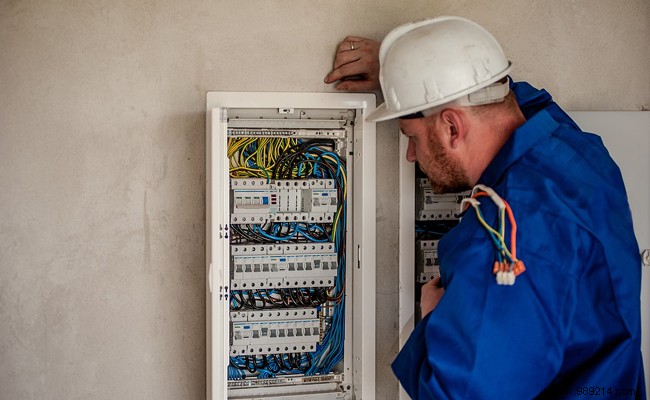Renovating your home is an opportunity to check that the electrical installations are up to standard. This is all the more recommended if you are the owner of an old building. And the wisest decision is to entrust this responsibility to professionals because the standards are constantly evolving.
When you become the owner of an old property, the interior electricity installation is a diagnosis that is added to others within the technical diagnosis file (DDT) that the seller must compile to submit to the buyer at the time of sale. Its purpose is to assess the risks that could compromise the safety of people and their property by checking that electrical standards are complied with. This is an essential step before moving in is possible, imposed by French law. The safety of local residents is at stake. Indeed, electrical installations that are not up to standard dangerously increase the risk of fire. The proof, nearly 40,000 domestic fires have resulted from it. Not to mention the dangers of electrocution, especially if children also live there. And above all, do not lose sight of the fact that being electrocuted can lead to serious physical consequences, even the death of the person. Moreover, as an indication, it is not only private homes that are concerned by compliance with electrical standards, but also public buildings, commercial and professional premises.

Established since October 22, 1969, it is the NF C 15-100 standard which governs the safety and the proper functioning of the electrical network of our apartments and our houses. It should be noted that amendments and modifications were made in November 2015 to adapt these regulations to current residential premises. Two decrees which entered into force on 1 st last September 2016 resulted from it.
It is the "Title 10" and "Title 11" which today regulate the entire electrical system, but also the communications network of our homes. Thus, for the installation to be up to standard, many requirements will have to be respected, for example only the limitation of the number of sockets in the living rooms, in the kitchen and in the bedroom. Or the adjustment of the amperage and the intensity of the currents. Not to mention the installation of indoor and/or outdoor lighting.
And the circuit of your electric heating is no exception either. Having to be protected by a circuit breaker essentially intended for this use, this entirely dependent circuit must also take account of thermal regulations RT2012. So many parameters to take into consideration.
Given the specificity and technical nature of an electrical installation, the use of the skills and know-how of a professional is particularly recommended for its installation. Of course, entrusting this task to a technician is not at all an obligation. If you are a good handyman and if you also have excellent knowledge of electricity, you can do it yourself. However, to ensure that your installations comply with the NF C 15-100 standard, these must be subsequently validated by the competent authority, the National Committee for the Safety of Users and Electricity. or the Consuel. Only this approved organization is actually able to issue you your certificate of conformity.
But already, you should know that a standard electrical installation must include at least an earth connection, to possibly compensate for current leaks occurring on the ground, a general circuit breaker, a meter and a load shedder. On the other hand, the electrical repair panel must incorporate circuit breakers and conductors.
During connection and connection, the cables must perfectly respect their color codes. Otherwise, special arrangements are made for rooms subject to humidity, including the bathroom. Otherwise, the professional is required to provide you with the complete diagram of your electrical installation. Finally, only buy sockets that meet NF standards, especially models with covers.